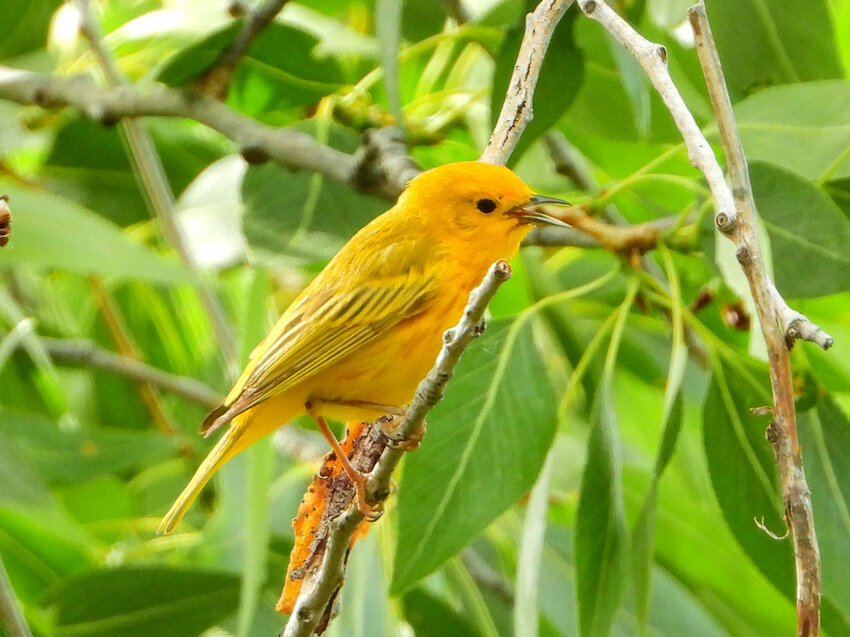
Photo courtesy Charles Martinez
This week’s Bird of the Week, compliments of the Weminuche Audubon Society and Audubon Rockies, is the yellow warbler.
For their colorful plumages and habits of flitting from place to place, naturalist John Tveten quoted wood warblers being described as “butterflies of the bird world.” The yellow warbler is the most widespread American wood warbler and one that brightens our summer with its yellow color and cheerful song.
These small birds are long-distance migrants that primarily spend the winter from southern Mexico to as far south as Peru and Brazil. In summer, they nest throughout most of Canada, Alaska and the lower United States.
Yellow warblers that breed here are all yellow with a green tinge on the back and have round heads and a plain face with black, beady eyes. Males have cinnamon-colored streaks on the breast and sides.
Although yellow warblers may be found in a variety of habitats with dense, shrubby cover, most often they nest in thickets along streams and wetlands. Insects, especially caterpillars, are their primary food source. With watchful eyes, they glean insects from shrubs and tree branches and will fly out to catch one in midair. In cultivated areas, they provide valuable pest control. Spiders and fruits are consumed less frequently.
Frequently the victims of brood parasitism by brown-headed cowbirds, yellow warblers have developed responses to this threat to nesting success. When a cowbird is spotted in the area, yellow warblers emit a “seet” call specific to this threat and females rush back to sit tightly on their nests, preventing egg-laying by a cowbird.
If a cowbird manages to slip an egg into the nest, female yellow warblers can recognize the difference and will build a new nest on top, starting over and sacrificing both her own eggs and the cowbird’s. If the cowbird is persistent, so is the warbler, and nests of up to six tiers have been found.
Eavesdropping red-winged blackbirds respond to the nest danger call made by yellow warblers, providing evidence of birds using social information from other species.
For information on events, visit www.weminucheaudubon.org and www.facebook.com/weminucheaudubon/.